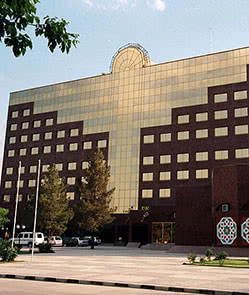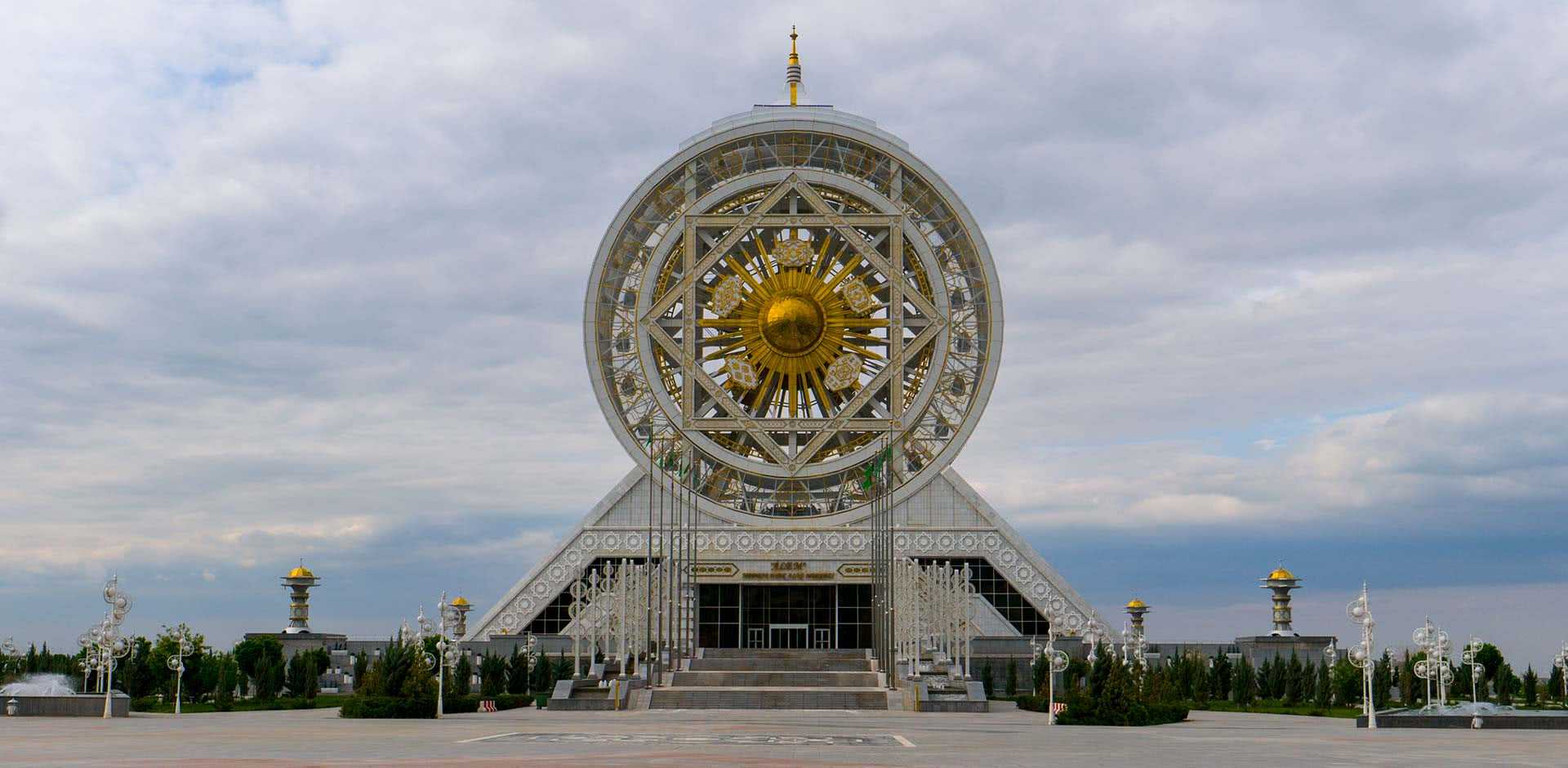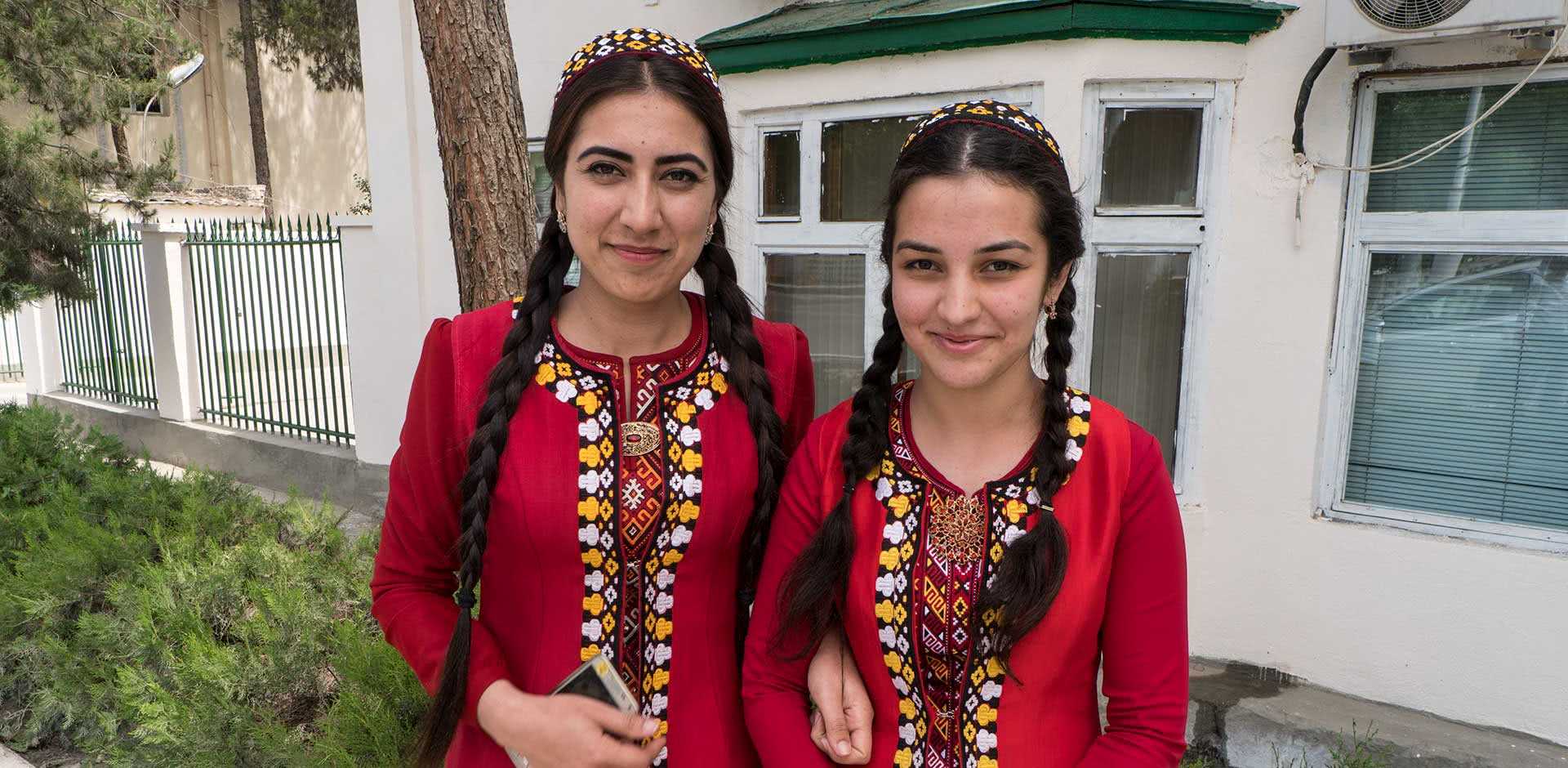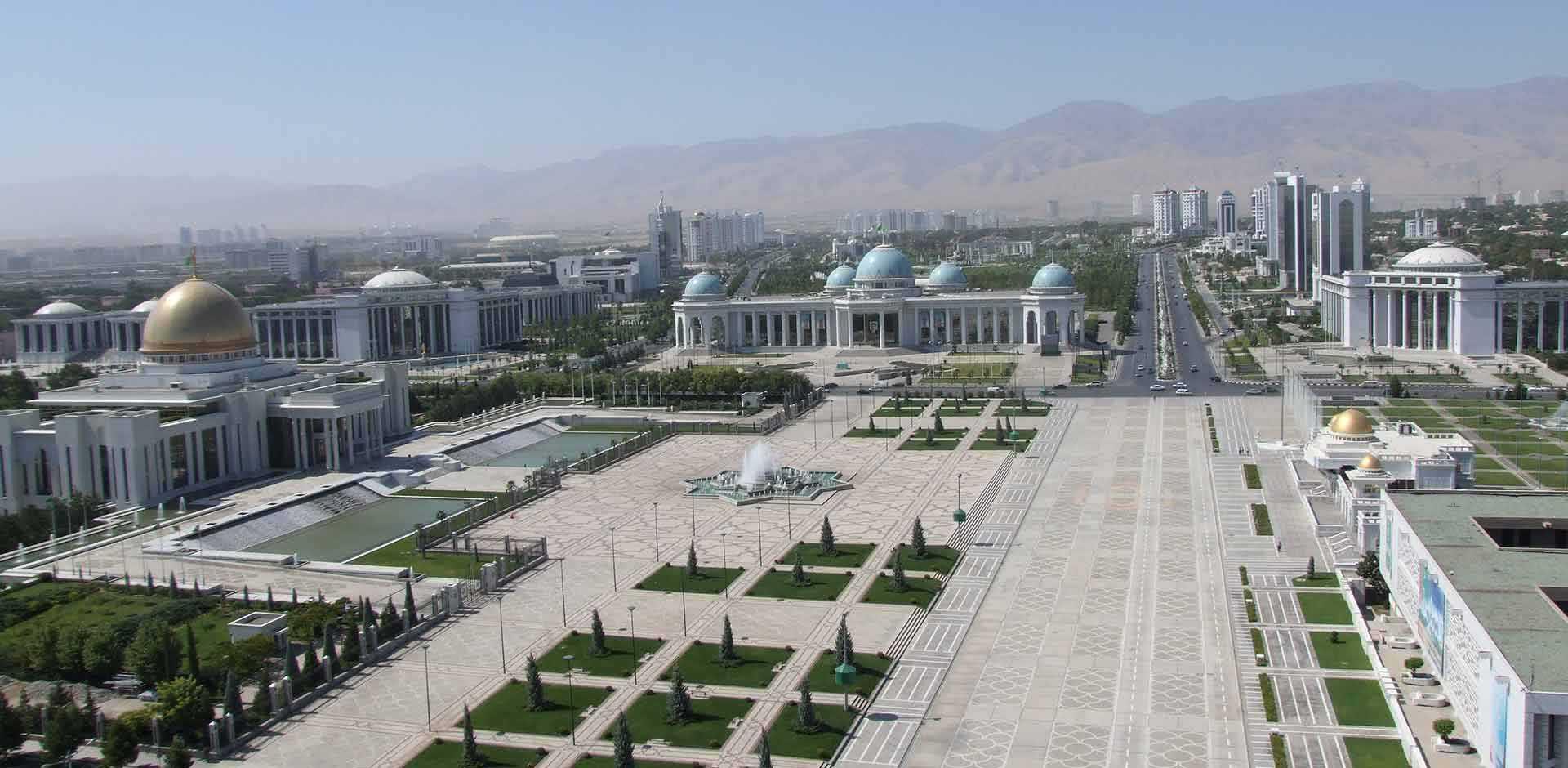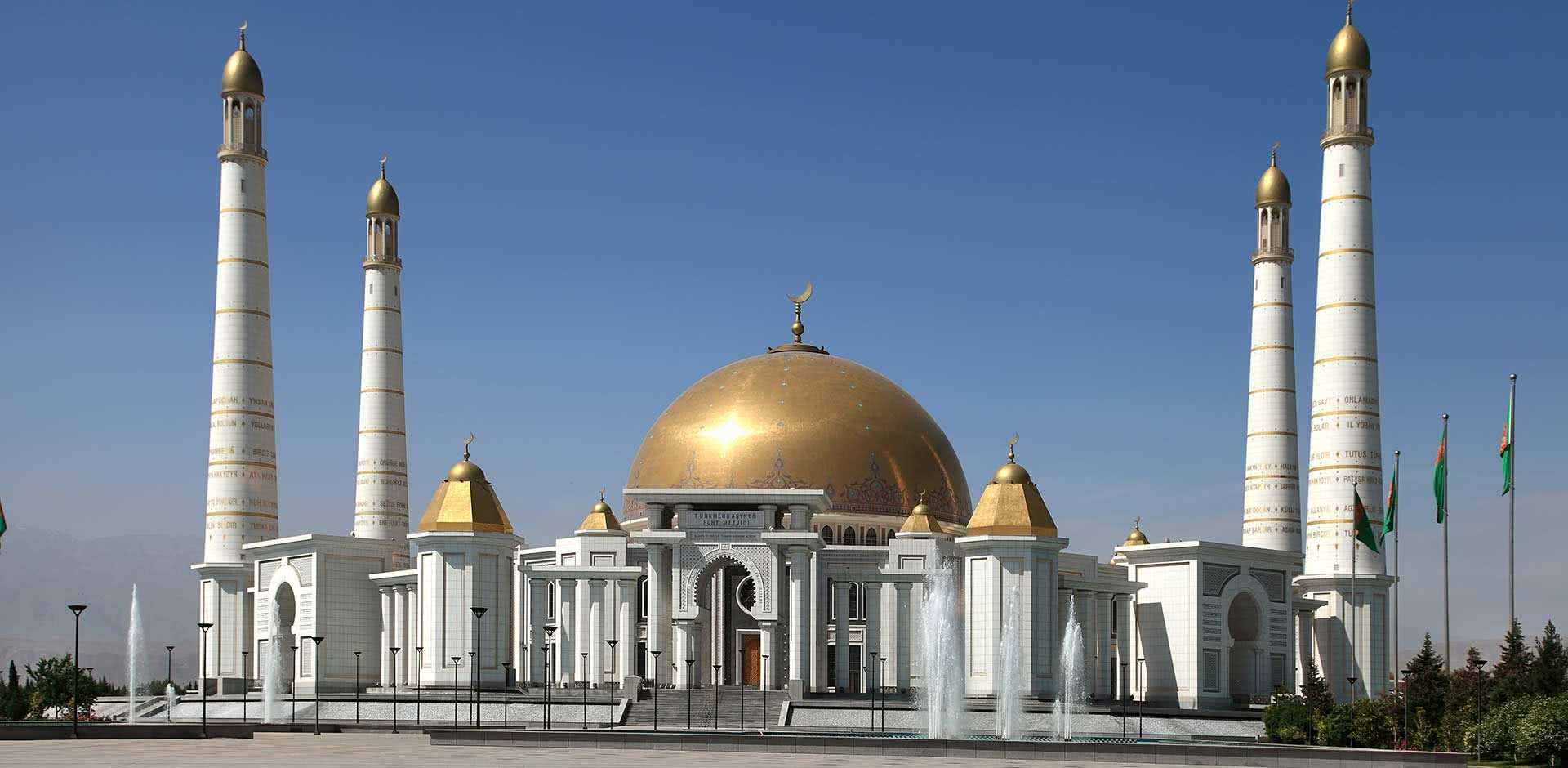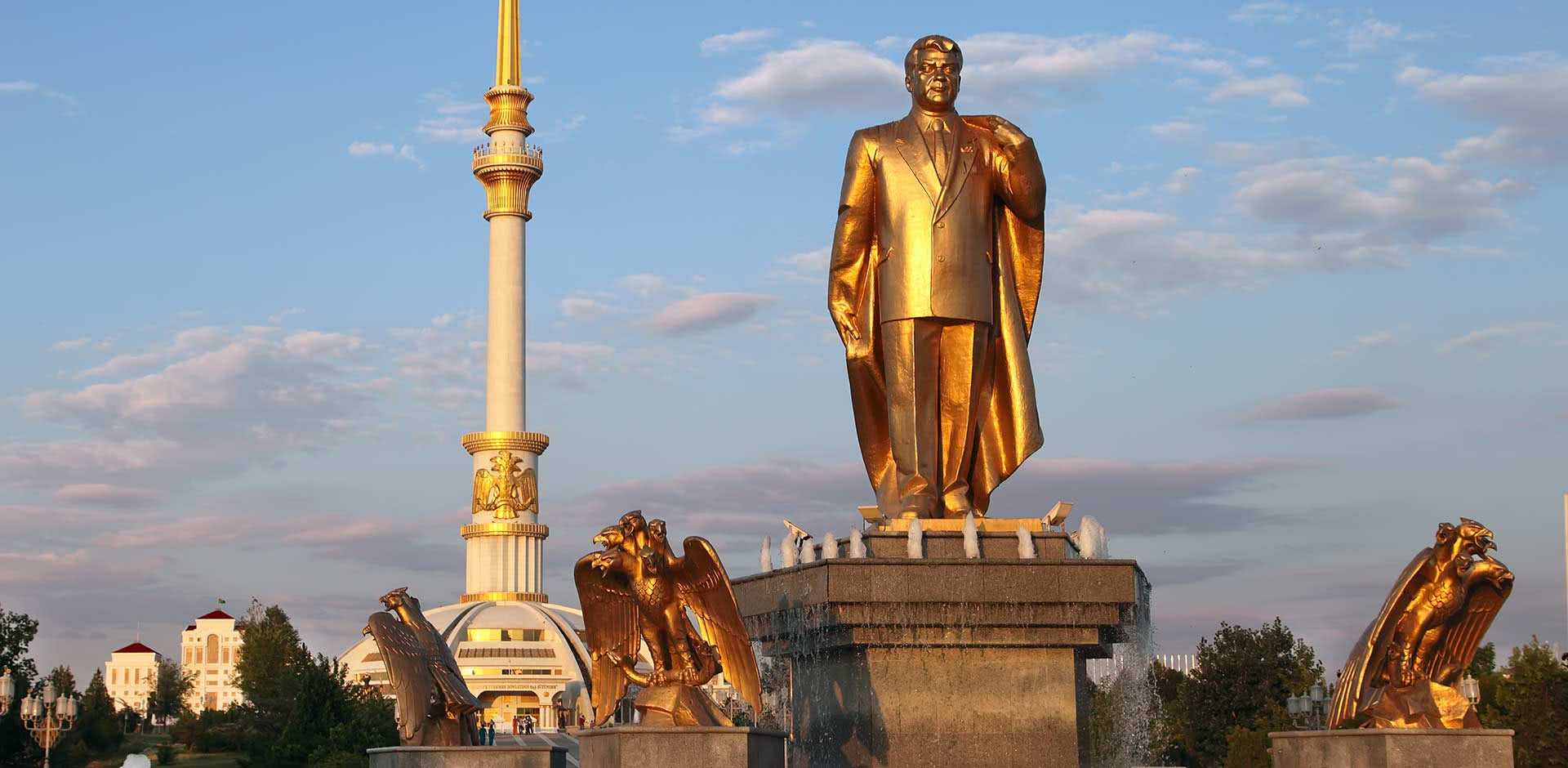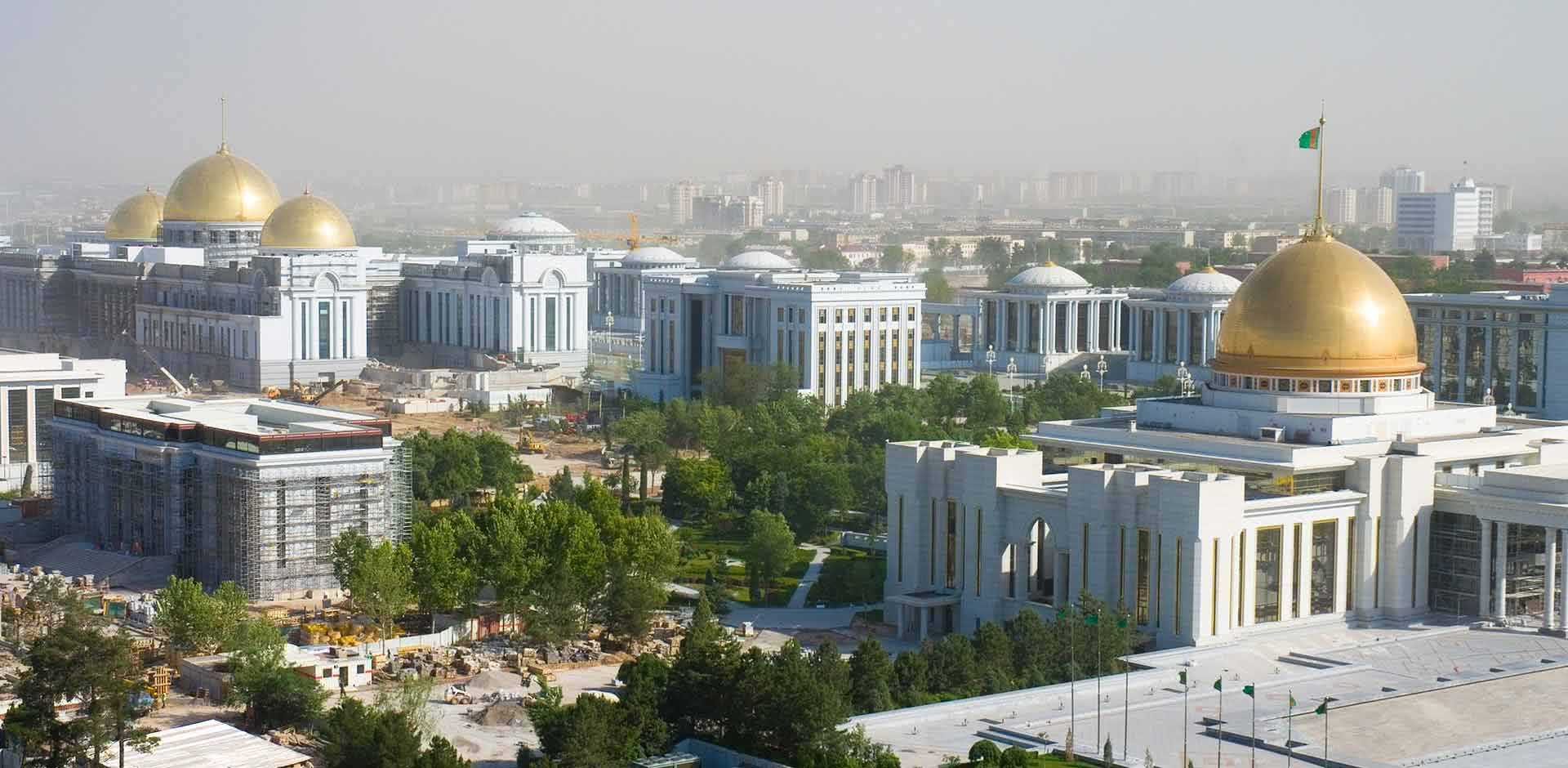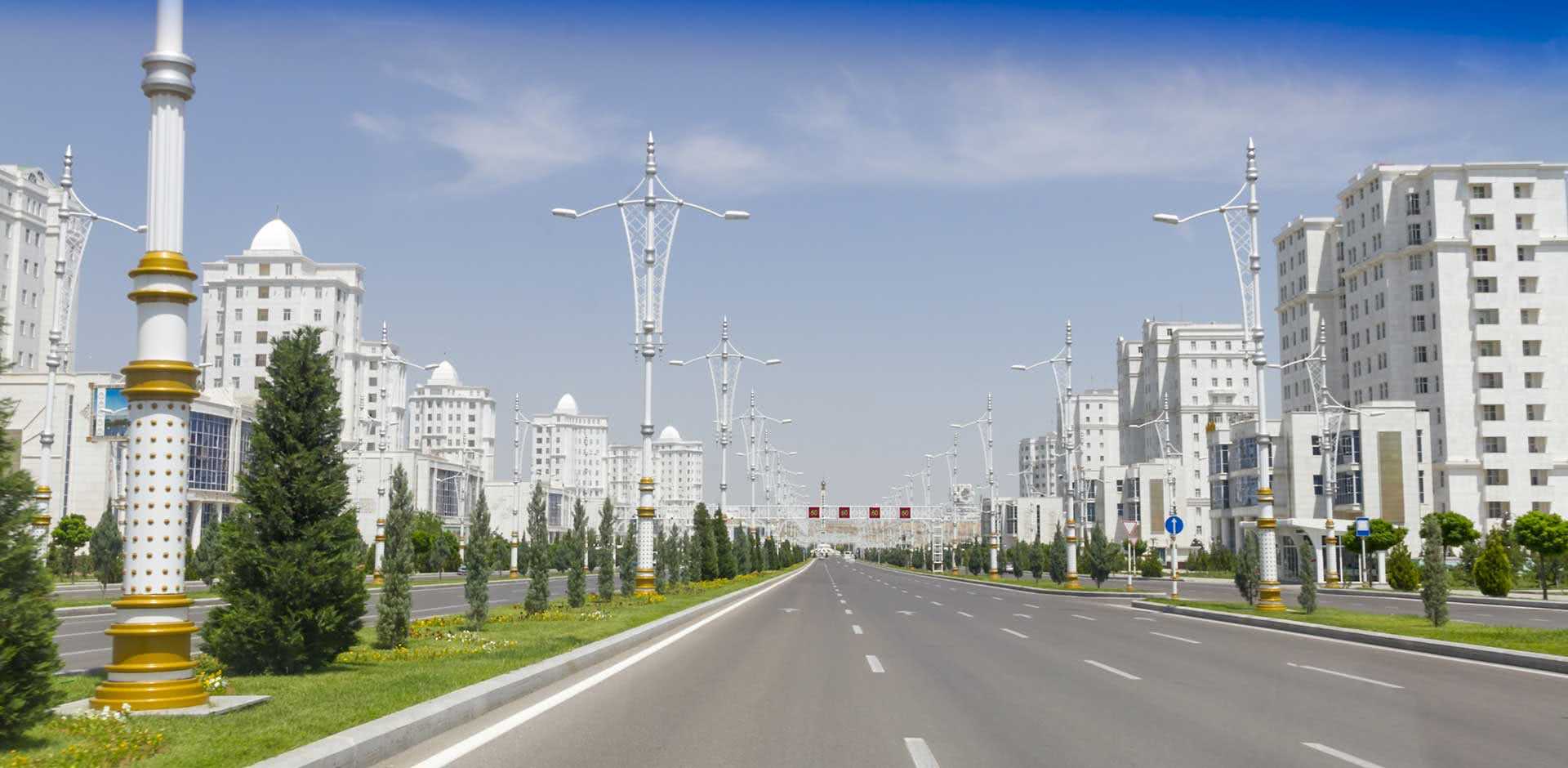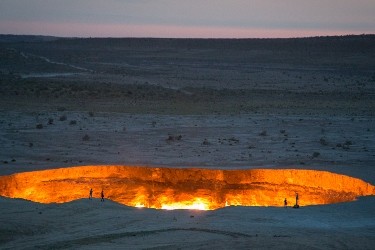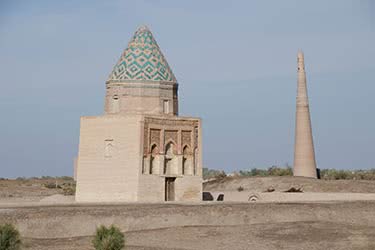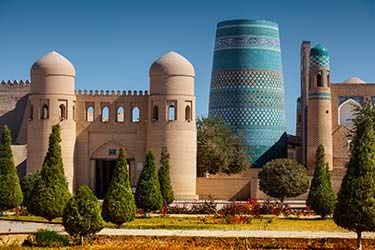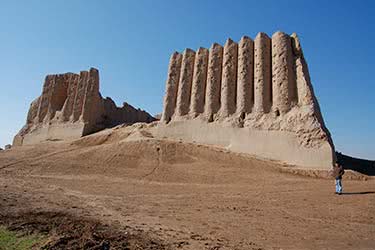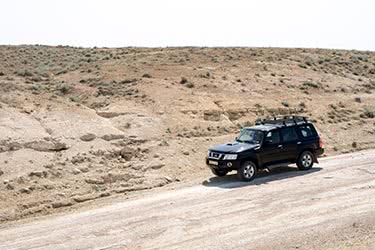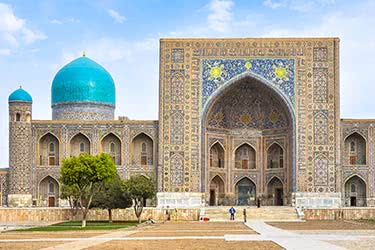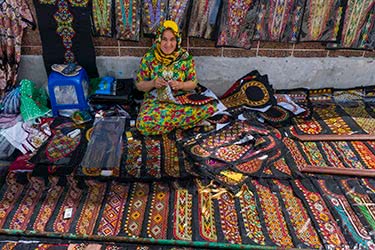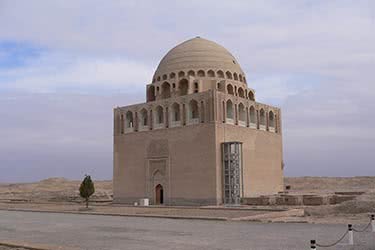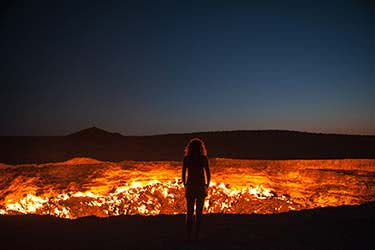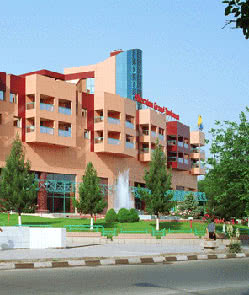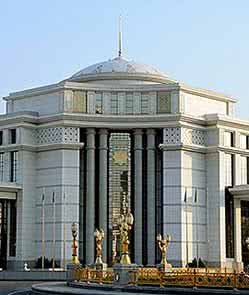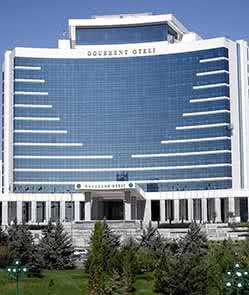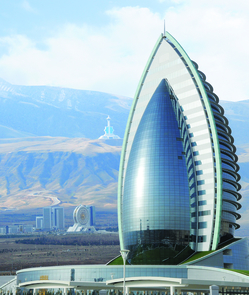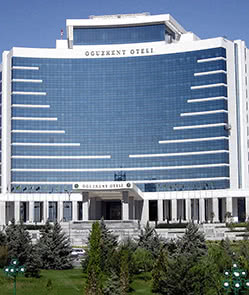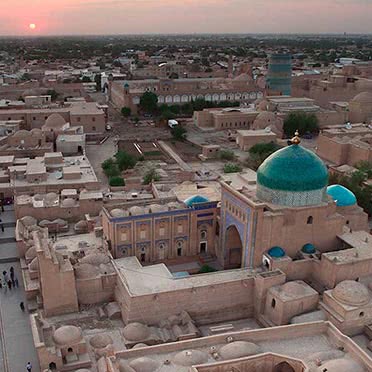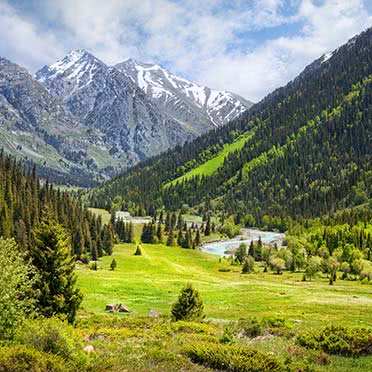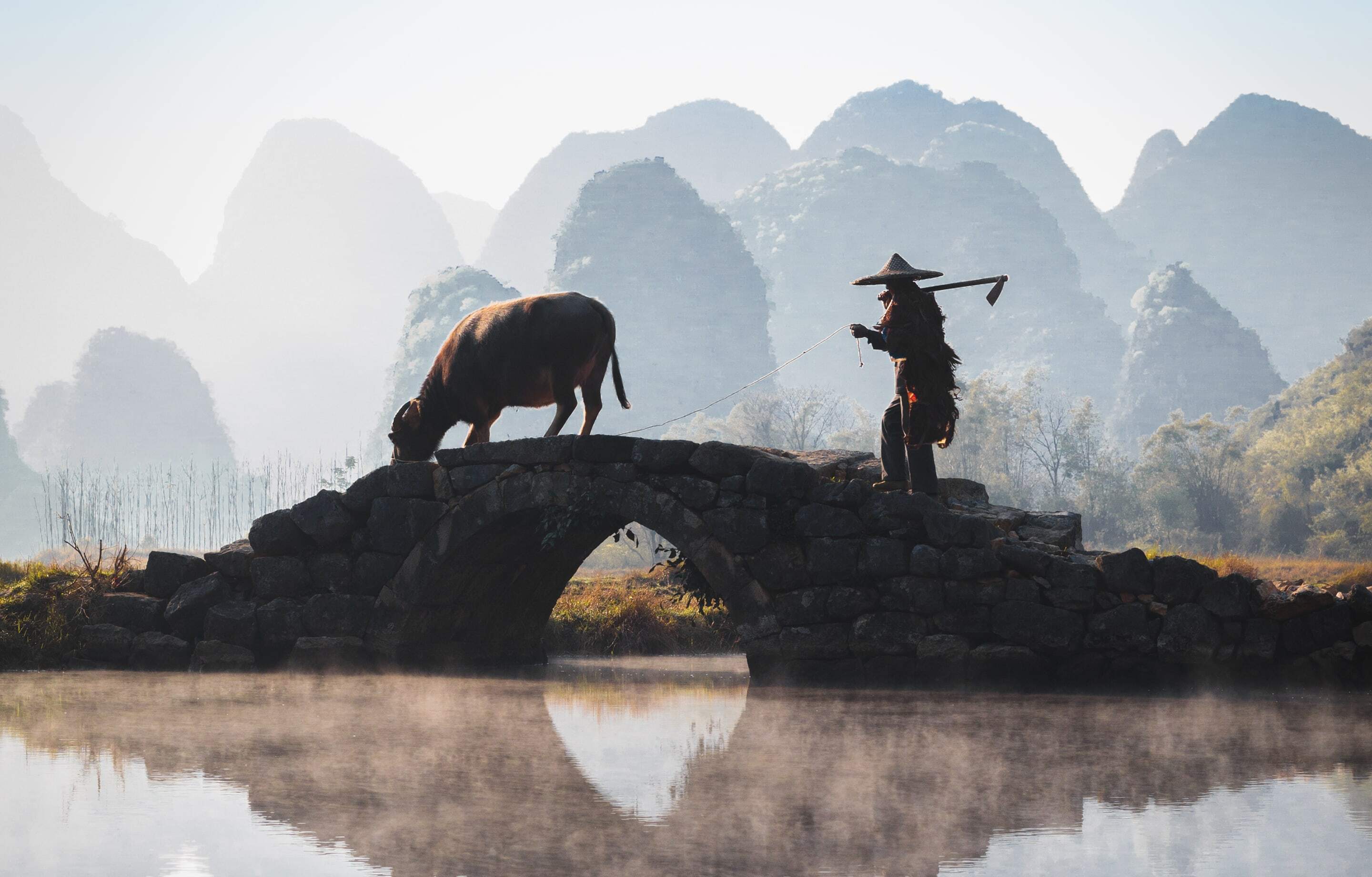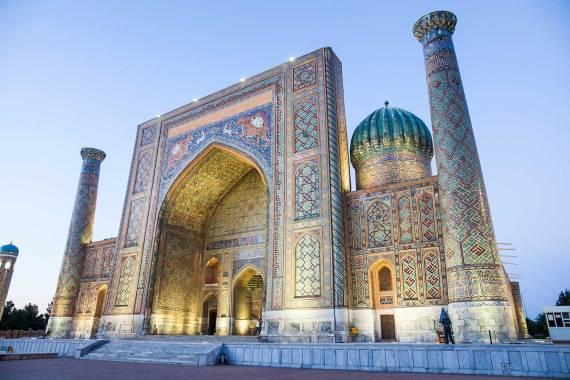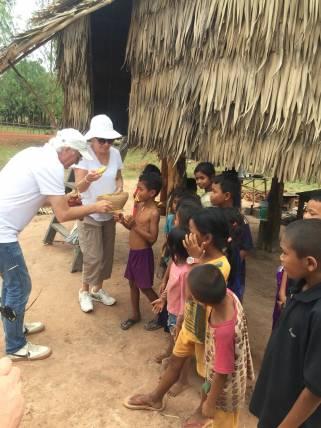Experiences
A handpicked selection of experiences endorsed by our experts. If you can’t see what you’re looking for, let us know, as our extensive network of local contacts can open many doors.
10th Independence Anniversary Monument
Ten years after Turkmenistan’s independence was secured, a statue of ten horses was erected in the Park of Independence. Set on an eight-pointed star, the Akhal Teke horses are surrounded by fountains with which water displays are given.
Akhal-Teke horse stud farm
Turkmenistan is famed for its proud lineage of beautiful, distinctive Akhal-Teke horses with their lean frames and elegant poise, renowned for their speed and grace. Historically valued by the Turkmen tribesmen, and declared a national treasure since Turkmenistan’s independence in 1991, Akhal-Teke breeding is considered an art-form and visitors flock to Ashgabat’s stud farms to see, meet and ride these famous and beautiful creatures.
Carpet Museum
Boasting the largest collection of Turkmen carpets anywhere in the world, the Carpet Museum of Ashgabat displays a range from the medieval period to the 20th century. The star attraction is the Guinness World Record-winning hand-woven carpet, the largest of its kind in the world.
Earthquake Museum
Beneath a dramatic monument of a bull and a golden baby, the Earthquake Museum of Ashgabat contains heartbreaking photography of the 1948 disaster as well as information on the mammoth clean-up operation that ensued.
Ertugrul Gazi Mosque
Named after the father of the Ottoman Empire, this elaborate and beautiful Turkish-style mosque is one of the largest in the city and was opened in 1998. Decorated with stunning tiled mosaics and luxurious carpets, the mosque is carved from marble and the cavernous domed prayer hall accommodates up to 5,000 worshippers.
Geok Depe Mosque
Just a forty-minute drive west of the city lie the ruins of the ancient fortress of Geok Depe and the modern Saparmyrat Haji Mosque. The stunning marble mosque with its turquoise domes is a striking sight amidst the desert sands.
Kipchak Mosque
The elaborate and beautiful golden-domed mosque, located just a short drive west of the city, was opened in 2004. Built by President Saparmurat Niyazov who is now buried in its tomb, its walls bear writings from the Quran.
Kopet Dag Mountains
The sweeping spines of the Kopet Dag mountains lie on the Turkmenistan-Iran frontier, to the southwest of Ashgabat. The peaks are popular with climbers, hikers and horseriders in search of a little Akhal Teke authenticity.
Kov-Ata
On the northern slopes of the Kopet Dag mountains, just over sixty miles from Ashgabat, lies the enigmatic underground lake of Kov-Ata, or ‘Father of Caves’. Visitors flock for the healing powers of the sulphur springs here.
Monument and Park of Independence
The symbol of modern Turkmenistan, the park contains the enormous Monument of Independence, boasting the highest spire in the country. Set amidst green lawns and sparkling fountains, the monument is surrounded by statues of the country’s great figures.
National Museum of History and Ethnography
With a number of vast halls covering Turkmenistan’s checkered history, the National Museum houses Bronze Age artifacts, items from ancient Nisa as well as information on post-independence Turkmenistan.
Old Nisa
Just over nine miles to the west of the city lies the site of Nisa, the ancient capital of the Parthian empire. Upon the hill are the remnants of the earthen ramparts that encircle the inner complexes where archaeological wonders of the empire were discovered.
Tolkuchka Sunday Market
One of the most colorful and bustling bazaars in all of central Asia, the Tolkuchka bazaar sprawls out over the city’s outskirts with thousands of shoppers haggling and bargaining over everything from livestock to carpets.
